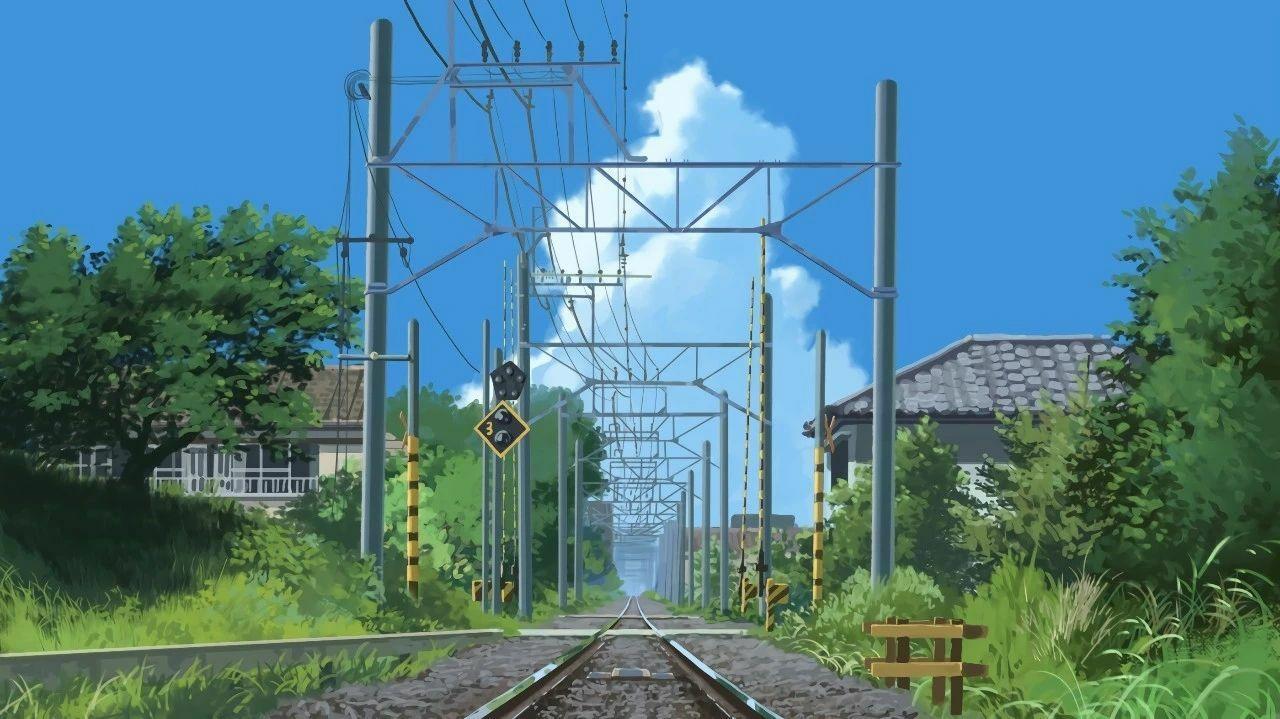yolov5(orangepi5plus)

orange pi 5 plus部署yolov5
使用声明
[!IMPORTANT]
本机和板子的主要工作
本机的工作:
- 训练自己的
yolov5的模型- 将自己的模型
best.pt转换best.onnx- 再将
best.onnx转换成best.rknnrknn的工作:
- 部署自己的模型进行检测任务
- 返回检测目标位置信息、种类等
所用涉及的工具包和系统环境说明。(没对应大概率出现问题)
本机(wsl或者虚拟机)所使用的环境:
ubuntu20.04rknn_toolkit2(v1.4.0)python3.8rknn板子上的环境
平台
rknn3588
rknn_toolkit2(v1.4.0)
yolov5(v1.6.0)
ubuntu20.04
python3.9
训练自己的模型
暂时不想补充
看看别人写的吧
https://zhuanlan.zhihu.com/p/501798155
.pt转.onnx
将
models/yolo.py文件中的class类下的forward函数由:1
2
3
4
5
6
7
8
9
10
11
12
13
14
15
16
17
18
19
20
21def forward(self, x):
z = [] # inference output
for i in range(self.nl):
x[i] = self.m[i](x[i]) # conv
bs, _, ny, nx = x[i].shape # x(bs,255,20,20) to x(bs,3,20,20,85)
x[i] = x[i].view(bs, self.na, self.no, ny, nx).permute(0, 1, 3, 4, 2).contiguous()
if not self.training: # inference
if self.dynamic or self.grid[i].shape[2:4] != x[i].shape[2:4]:
self.grid[i], self.anchor_grid[i] = self._make_grid(nx, ny, i)
if isinstance(self, Segment): # (boxes + masks)
xy, wh, conf, mask = x[i].split((2, 2, self.nc + 1, self.no - self.nc - 5), 4)
xy = (xy.sigmoid() * 2 + self.grid[i]) * self.stride[i] # xy
wh = (wh.sigmoid() * 2) ** 2 * self.anchor_grid[i] # wh
y = torch.cat((xy, wh, conf.sigmoid(), mask), 4)
else: # Detect (boxes only)
xy, wh, conf = x[i].sigmoid().split((2, 2, self.nc + 1), 4)
xy = (xy * 2 + self.grid[i]) * self.stride[i] # xy
wh = (wh * 2) ** 2 * self.anchor_grid[i] # wh
y = torch.cat((xy, wh, conf), 4)
z.append(y.view(bs, self.na * nx * ny, self.no))
return x if self.training else (torch.cat(z, 1),) if self.export else (torch.cat(z, 1), x)更改为:
1
2
3
4
5
6
7def forward(self, x):
z = [] # inference output
for i in range(self.nl):
if os.getenv('RKNN_model_hack', '0') != '0':
x[i] = torch.sigmoid(self.m[i](x[i])) # conv
return x再在
yolo.py和export.py文件的开头加上:1
2import os
os.environ['RKNN_model_hack'] = 'npu_2'修改之后按照如下命令导出
onnx。其中
./runs/train/exp3/weights/best.pt换成自己训练的pt文件。1
python export.py --weights ./runs/train/exp3/weights/best.pt --img 640 --batch 1 --include onnx --opset 12
.onnx转.rknn
使用虚拟机或者是wsl创建一个
Ubuntu20.04。因为使用的
rknn-toolkit2-1.4.0版本所使用的模型转化的包只有python3.6和python3.8两个版本所以需要创建py3.6或者py3.8的python环境,可使用conda来创建,这里不展开叙述。首先进入到你自己rknn模型转换的工作空间下,克隆下
rknn-toolkit2的工具包。1
git clone https://github.com/rockchip-linux/rknn-toolkit2.git -b v1.4.0
进入到
rknn-toolkit2文件夹下的packages下packages下应该有两个.whl的文件,因为我们所使用的python是python3.8,所以安装对应的包。1
pip install rknn_toolkit2-1.4.0_22dcfef4-cp38-cp38m-linux_x86_64.whl
等待安装完毕检查是否安装成功:
1
python
进入
python。1
from rknn.api import RKNN
没有报错即说明安装成功。
然后进入
rknn-toolkit2目录下的examples/onnx/yolov51
cd examples/onnx/yolov5
将原本的
test.py复制一份重新命名为mytest.py1
cp test.py ./mytest.py
几个需要注意修改的地方:(使用
ctrl+F,直接进行查找到对应的位置进行修改)1
2
3
4
5
6
7
8
9
10
11
12
13ONNX_MODEL = 'best.onnx' #待转换的onnx模型
RKNN_MODEL = 'best.rknn' #转换后的rknn模型
IMG_PATH = './1.jpg' #用于测试图片
DATASET = './dataset.txt' #用于测试的数据集,内容为多个测试图片的名字
QUANTIZE_ON = True #不修改
OBJ_THRESH = 0.25 #不修改
NMS_THRESH = 0.45 #不修改
IMG_SIZE = 640 #不修改
CLASSES = ("person") #修改为你所训练的模型所含的标签
#rknn.config(mean_values=[[0, 0, 0]], std_values=[[255, 255, 255]])
#将上述语句添加注释改成下述语句
rknn.config(mean_values=[[0, 0, 0]], std_values=[[255, 255, 255]], target_platform='rk3588')#选择使用的平台此处使用的是rknn3588想要程序执行完,展示推理效果,将以下代码中的语句的注释打开
1
2
3# cv2.imshow("post process result", img_1)
# cv2.waitKey(0)
# cv2.destroyAllWindows()然后终端执行:
1
python mytest.py
文件夹中出现
best.rknn的文件即说明转换成功。在orange pi 5 plus上部署rknn模型并实时摄像头推理检测
在
RKNN3588的Ubuntu20系统上安装Miniconda,需要注意的是,RKNN3588的Ubuntu20系统为aarch架构因此下载的Miniconda版本和之前有所不同,需要选择对应的aarch版本。安装
miniconda进入https://mirrors.tuna.tsinghua.edu.cn/anaconda/miniconda/下载对应所需版本
此处我们需要在
ubuntu上使用python3.9,我们选择Miniconda3-py39_23.11.0-1-Linux-aarch64.shctrl+F查找到对应的版本,将其放进板子中进行下载1
bash ./Miniconda3-py39_23.11.0-1-Linux-aarch64.sh
在用户目录下安装就不加
sudo,此处我们默认进入用户下就不添加否则之后输入conda会显示无该指令。然后进行环境创建
1
conda create -n rknn_39 python=3.9
进入到创建的环境中
1
conda activate rknn_39
下载
rknn-toolkit-lite2到板子上将在PC端的
rknn-toolkit2(1.4.0)复制到板子上也可以再次克隆到板子上
1
git clone https://github.com/rockchip-linux/rknn-toolkit2.git -b v1.4.0
进入
rknn_toolkit2/rknn-toolkit2/rknn_toolkit_lite2/packages安装对应的py3.9的包,有别于PC端的此处下载的rknn-toolkit-lite轻量化的包
1
pip install rknn_toolkit_lite2-1.4.0-cp39-cp39-linux_aarch64.whl
进行测试:
1
python
1
from rknnlite.api import RKNNLite
没有报错即为安装成功。
安装
rknn_npu1
git clone https://github.com/rockchip-linux/rknpu2
将下面的
so文件复制到/usr/lib/下1
sudo cp rknpu2/runtime/RK3588/Linux/librknn_api/librknnrt.so /usr/lib/librknnrt.so
在你板子的
yolov5目标检测的工作空间下创建一个名为depoly.py的文件1
2
3
4
5
6
7
8
9
10
11
12
13
14
15
16
17
18
19
20
21
22
23
24
25
26
27
28
29
30
31
32
33
34
35
36
37
38
39
40
41
42
43
44
45
46
47
48
49
50
51
52
53
54
55
56
57
58
59
60
61
62
63
64
65
66
67
68
69
70
71
72
73
74
75
76
77
78
79
80
81
82
83
84
85
86
87
88
89
90
91
92
93
94
95
96
97
98
99
100
101
102
103
104
105
106
107
108
109
110
111
112
113
114
115
116
117
118
119
120
121
122
123
124
125
126
127
128
129
130
131
132
133
134
135
136
137
138
139
140
141
142
143
144
145
146
147
148
149
150
151
152
153
154
155
156
157
158
159
160
161
162
163
164
165
166
167
168
169
170
171
172
173
174
175
176
177
178
179
180
181
182
183
184
185
186
187
188
189
190
191
192
193
194
195
196
197
198
199
200
201
202
203
204
205
206
207
208
209
210
211
212
213
214
215
216
217
218
219
220
221
222
223
224
225
226
227
228
229
230
231
232
233
234
235
236
237
238
239
240
241
242
243
244
245
246
247
248
249
250
251
252
253
254
255
256
257
258
259
260
261
262
263
264
265
266
267
268import urllib
import time
import sys
import numpy as np
import cv2
from rknnlite.api import RKNNLite
RKNN_MODEL = 'yolov5s.rknn'
IMG_PATH = './bus.jpg'
OBJ_THRESH = 0.25
NMS_THRESH = 0.45
IMG_SIZE = 640
CLASSES = ("person", "bicycle", "car", "motorbike ", "aeroplane ", "bus ", "train", "truck ", "boat", "traffic light",
"fire hydrant", "stop sign ", "parking meter", "bench", "bird", "cat", "dog ", "horse ", "sheep", "cow", "elephant",
"bear", "zebra ", "giraffe", "backpack", "umbrella", "handbag", "tie", "suitcase", "frisbee", "skis", "snowboard", "sports ball", "kite",
"baseball bat", "baseball glove", "skateboard", "surfboard", "tennis racket", "bottle", "wine glass", "cup", "fork", "knife ",
"spoon", "bowl", "banana", "apple", "sandwich", "orange", "broccoli", "carrot", "hot dog", "pizza ", "donut", "cake", "chair", "sofa",
"pottedplant", "bed", "diningtable", "toilet ", "tvmonitor", "laptop ", "mouse ", "remote ", "keyboard ", "cell phone", "microwave ",
"oven ", "toaster", "sink", "refrigerator ", "book", "clock", "vase", "scissors ", "teddy bear ", "hair drier", "toothbrush ")
def sigmoid(x):
return 1 / (1 + np.exp(-x))
def xywh2xyxy(x):
# Convert [x, y, w, h] to [x1, y1, x2, y2]
y = np.copy(x)
y[:, 0] = x[:, 0] - x[:, 2] / 2 # top left x
y[:, 1] = x[:, 1] - x[:, 3] / 2 # top left y
y[:, 2] = x[:, 0] + x[:, 2] / 2 # bottom right x
y[:, 3] = x[:, 1] + x[:, 3] / 2 # bottom right y
return y
def process(input, mask, anchors):
anchors = [anchors[i] for i in mask]
grid_h, grid_w = map(int, input.shape[0:2])
box_confidence = sigmoid(input[..., 4])
box_confidence = np.expand_dims(box_confidence, axis=-1)
box_class_probs = sigmoid(input[..., 5:])
box_xy = sigmoid(input[..., :2])*2 - 0.5
col = np.tile(np.arange(0, grid_w), grid_w).reshape(-1, grid_w)
row = np.tile(np.arange(0, grid_h).reshape(-1, 1), grid_h)
col = col.reshape(grid_h, grid_w, 1, 1).repeat(3, axis=-2)
row = row.reshape(grid_h, grid_w, 1, 1).repeat(3, axis=-2)
grid = np.concatenate((col, row), axis=-1)
box_xy += grid
box_xy *= int(IMG_SIZE/grid_h)
box_wh = pow(sigmoid(input[..., 2:4])*2, 2)
box_wh = box_wh * anchors
box = np.concatenate((box_xy, box_wh), axis=-1)
return box, box_confidence, box_class_probs
def filter_boxes(boxes, box_confidences, box_class_probs):
boxes = boxes.reshape(-1, 4)
box_confidences = box_confidences.reshape(-1)
box_class_probs = box_class_probs.reshape(-1, box_class_probs.shape[-1])
_box_pos = np.where(box_confidences >= OBJ_THRESH)
boxes = boxes[_box_pos]
box_confidences = box_confidences[_box_pos]
box_class_probs = box_class_probs[_box_pos]
class_max_score = np.max(box_class_probs, axis=-1)
classes = np.argmax(box_class_probs, axis=-1)
_class_pos = np.where(class_max_score >= OBJ_THRESH)
boxes = boxes[_class_pos]
classes = classes[_class_pos]
scores = (class_max_score* box_confidences)[_class_pos]
return boxes, classes, scores
def nms_boxes(boxes, scores):
x = boxes[:, 0]
y = boxes[:, 1]
w = boxes[:, 2] - boxes[:, 0]
h = boxes[:, 3] - boxes[:, 1]
areas = w * h
order = scores.argsort()[::-1]
keep = []
while order.size > 0:
i = order[0]
keep.append(i)
xx1 = np.maximum(x[i], x[order[1:]])
yy1 = np.maximum(y[i], y[order[1:]])
xx2 = np.minimum(x[i] + w[i], x[order[1:]] + w[order[1:]])
yy2 = np.minimum(y[i] + h[i], y[order[1:]] + h[order[1:]])
w1 = np.maximum(0.0, xx2 - xx1 + 0.00001)
h1 = np.maximum(0.0, yy2 - yy1 + 0.00001)
inter = w1 * h1
ovr = inter / (areas[i] + areas[order[1:]] - inter)
inds = np.where(ovr <= NMS_THRESH)[0]
order = order[inds + 1]
keep = np.array(keep)
return keep
def yolov5_post_process(input_data):
masks = [[0, 1, 2], [3, 4, 5], [6, 7, 8]]
anchors = [[10, 13], [16, 30], [33, 23], [30, 61], [62, 45],
[59, 119], [116, 90], [156, 198], [373, 326]]
boxes, classes, scores = [], [], []
for input, mask in zip(input_data, masks):
b, c, s = process(input, mask, anchors)
b, c, s = filter_boxes(b, c, s)
boxes.append(b)
classes.append(c)
scores.append(s)
boxes = np.concatenate(boxes)
boxes = xywh2xyxy(boxes)
classes = np.concatenate(classes)
scores = np.concatenate(scores)
nboxes, nclasses, nscores = [], [], []
for c in set(classes):
inds = np.where(classes == c)
b = boxes[inds]
c = classes[inds]
s = scores[inds]
keep = nms_boxes(b, s)
nboxes.append(b[keep])
nclasses.append(c[keep])
nscores.append(s[keep])
if not nclasses and not nscores:
return None, None, None
boxes = np.concatenate(nboxes)
classes = np.concatenate(nclasses)
scores = np.concatenate(nscores)
return boxes, classes, scores
def draw1(image, boxes, scores, classes):
for box, score, cl in zip(boxes, scores, classes):
top, left, right, bottom = box
print('class: {}, score: {}'.format(CLASSES[cl], score))
print('box coordinate left,top,right,down: [{}, {}, {}, {}]'.format(top, left, right, bottom))
top = int(top)
left = int(left)
right = int(right)
bottom = int(bottom)
cv2.rectangle(image, (top, left), (right, bottom), (255, 0, 0), 2)
cv2.putText(image, '{0} {1:.2f}'.format(CLASSES[cl], score),
(top, left - 6),
cv2.FONT_HERSHEY_SIMPLEX,
0.6, (0, 0, 255), 2)
def letterbox(im, new_shape=(640, 640), color=(0, 0, 0)):
shape = im.shape[:2] # current shape [height, width]
if isinstance(new_shape, int):
new_shape = (new_shape, new_shape)
r = min(new_shape[0] / shape[0], new_shape[1] / shape[1])
ratio = r, r # width, height ratios
new_unpad = int(round(shape[1] * r)), int(round(shape[0] * r))
dw, dh = new_shape[1] - new_unpad[0], new_shape[0] - new_unpad[1] # wh padding
dw /= 2 # divide padding into 2 sides
dh /= 2
if shape[::-1] != new_unpad: # resize
im = cv2.resize(im, new_unpad, interpolation=cv2.INTER_LINEAR)
top, bottom = int(round(dh - 0.1)), int(round(dh + 0.1))
left, right = int(round(dw - 0.1)), int(round(dw + 0.1))
im = cv2.copyMakeBorder(im, top, bottom, left, right, cv2.BORDER_CONSTANT, value=color) # add border
return im, ratio, (dw, dh)
if __name__ == '__main__':
rknn = RKNNLite()
print('--> Load RKNN model')
ret = rknn.load_rknn(RKNN_MODEL)
if ret != 0:
print('Load RKNN model failed')
exit(ret)
print('done')
ret = rknn.init_runtime()
if ret != 0:
print('Init runtime environment failed!')
exit(ret)
print('done')
capture = cv2.VideoCapture(0)
ref, frame = capture.read()
if not ref:
raise ValueError("error reading")
fps = 0.0
while(True):
t1 = time.time()
#
ref, frame = capture.read()
if not ref:
break
# BGRtoRGB
frame = cv2.cvtColor(frame,cv2.COLOR_BGR2RGB)
#############
#
img = frame
img, ratio, (dw, dh) = letterbox(img, new_shape=(IMG_SIZE, IMG_SIZE))
img = cv2.cvtColor(img, cv2.COLOR_BGR2RGB)
# Inference
print('--> Running model')
outputs = rknn.inference(inputs=[img])
input0_data = outputs[0]
input1_data = outputs[1]
input2_data = outputs[2]
input0_data = input0_data.reshape([3, -1]+list(input0_data.shape[-2:]))
input1_data = input1_data.reshape([3, -1]+list(input1_data.shape[-2:]))
input2_data = input2_data.reshape([3, -1]+list(input2_data.shape[-2:]))
input_data = list()
input_data.append(np.transpose(input0_data, (2, 3, 0, 1)))
input_data.append(np.transpose(input1_data, (2, 3, 0, 1)))
input_data.append(np.transpose(input2_data, (2, 3, 0, 1)))
boxes, classes, scores = yolov5_post_process(input_data)
img_1 = cv2.cvtColor(img, cv2.COLOR_RGB2BGR)
if boxes is not None:
draw1(img_1, boxes, scores, classes)
fps = ( fps + (1./(time.time()-t1)) ) / 2
print("fps= %.2f"%(fps))
cv2.imshow("video",img_1[:,:,::-1])
c= cv2.waitKey(1) & 0xff
if c==27:
capture.release()
break
print("Video Detection Done!")
capture.release()
cv2.destroyAllWindows()其中将一下几项改成你的配置
1
2
3
4
5
6
7
8
9
10
11
12
13
14RKNN_MODEL = 'yolov5s.rknn' #修改为你的模型路径
IMG_PATH = './bus.jpg' #修改为你要测试的图片路径
OBJ_THRESH = 0.25 #一般不做修改
NMS_THRESH = 0.45 #一般不做修改
IMG_SIZE = 640 #一般不做修改
CLASSES = ("person", "bicycle", "car", "motorbike ", "aeroplane ", "bus ", "train", "truck ", "boat", "traffic light",
"fire hydrant", "stop sign ", "parking meter", "bench", "bird", "cat", "dog ", "horse ", "sheep", "cow", "elephant",
"bear", "zebra ", "giraffe", "backpack", "umbrella", "handbag", "tie", "suitcase", "frisbee", "skis", "snowboard", "sports ball", "kite",
"baseball bat", "baseball glove", "skateboard", "surfboard", "tennis racket", "bottle", "wine glass", "cup", "fork", "knife ",
"spoon", "bowl", "banana", "apple", "sandwich", "orange", "broccoli", "carrot", "hot dog", "pizza ", "donut", "cake", "chair", "sofa",
"pottedplant", "bed", "diningtable", "toilet ", "tvmonitor", "laptop ", "mouse ", "remote ", "keyboard ", "cell phone", "microwave ",
"oven ", "toaster", "sink", "refrigerator ", "book", "clock", "vase", "scissors ", "teddy bear ", "hair drier", "toothbrush ")
capture = cv2.VideoCapture(0) #修改成你所使用的摄像头编号再将你生成的
.rknn模型放置在该工作空间下运行代码
1
python depoly.py
跟到了最后你很棒 奖励一下自己
以上部署完毕
参考
rknn-toolkit2(v1.4.0)
yolov5模型(.pt)在RK3588(S)上的部署(实时摄像头检测)
保姆式yolov5教程,训练你自己的数据集
【RK3588】 File “rknnlite/api/rknn_runtime.py“, line 875, in rknnlite.api.rknn_runtime.RKNNRuntime.bui
【已解决】onnx转换为rknn置信度大于1,图像出现乱框问题解决
运行示例出错:E Catch exception when setting inputs. #14
